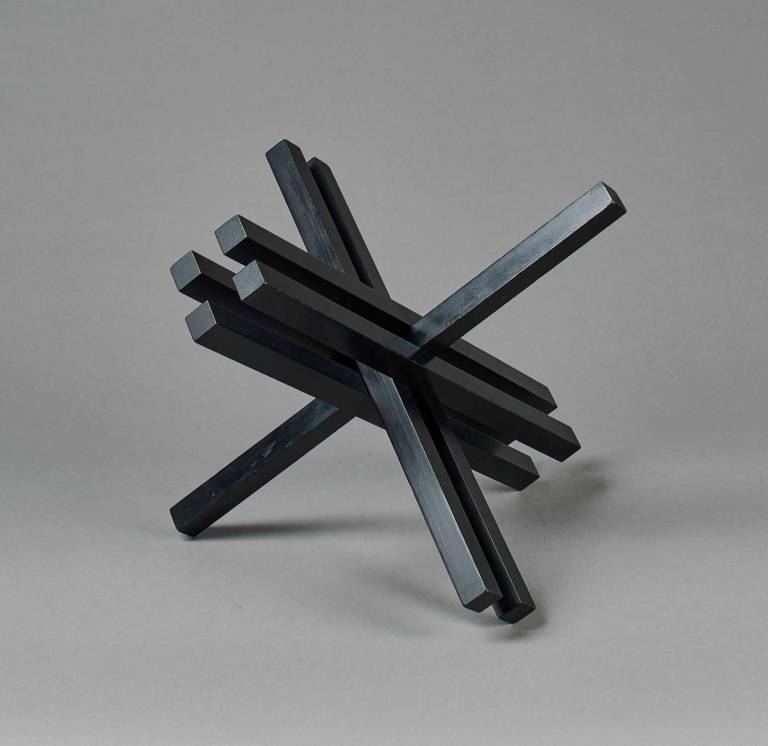Max BillKern aus Dopplung – ‘The Crux comes from the Duplication’. 1968.
- Sculpture
- Ref: 615305/19576
Original black-painted and hand-made wood sculpture. 1968. Signed and dated with hand incised line. Numbered by hand incised line from the edition of only 15 examples. Issued by the artist and Denise René Gallery, Paris 1968.
Provenance: Private Collection, Switzerland.
Wood elements in exceptionally fine condition. Each element length: 47 cm. Overall height 35.5 cm. Overall width 35.5 cm
The original title for this work is as above -‘Kern aus Dopplung’ – ‘The Crux comes from the Duplication’ and refers to the manner in which the similar individual elements interact at the point at which they criss-cross each other.
This sculpture is the very rare hand-made and painted wood maquette for the subsequent issued version which is polished chrome (See the note below). This original version was entirely hand-created in Bill's studio and only 15 examples were constructed. It is an extremely fine expression of Bill’s focus on function, construction and spatial form.
Max Bill co-founded the very important 'Concrete Art - Art Concrète' movement in the mid 1950's in Paris and Switzerland. It focused on the expression of structure in space. He was an artist of multiple talents - painter, sculptor, designer - and also very influential through his teaching. He studied from 1927 to 1929 at the Weimar Bauhaus, alongside Josef Albers and under the key figure Walter Gropius.
At the Bauhaus he absorbed Gropius' key concept of 'function' but extended it beyond the field of architecture (to which Gropius had applied it) into the visual arts, especially painting, graphic art and sculpture. During the war years he returned to his native Switzerland to teach product design based on the same 'functional' concept.
In the first years after the War, focusing on painting, graphics and sculpture, he became one of the central figures in the movement towards the linking of geometric and optical form.
Note: The subsequent chrome-on-brass edition of this sculpture was published by Galerie Denise Rene in Paris with the simplified title: ‘Doublement – Double’. It was issued in an edition of 200.
